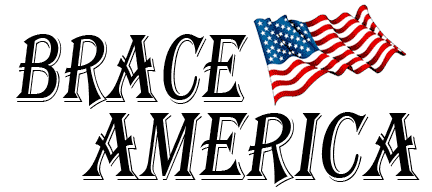By using this website you agree to but are not limited to the following:
- The products listed on this site sold by Brace America LLC. are to be sized and fitted by a licensed Orthotist, and Brace America LLC. is not liable for fitting errors or any damages from using said products.
- Using products received from this website or from Brace America LLC is the responsibility of the individual or company who purchased/received the items and chooses to use items as they see fit, using these items in ways not recommended by a licensed Orthotists who has agreed to accept you as a patient.
What are some commonly used Orthopaedic terms that we hear in our marketplace?
ACL (Anterior Cruciate Ligament) This is the ligament that connects the back of the femur to the front of the tibia.
ACL Tear – An ACL injury can cause small tears of the ligament, a separation of the ligament and part of the bone from the rest of the bone, a separation of the ligament from the upper or lower leg bone, or a complete tear of the ligament. When any of these take place, the lower leg bone moves abnormally on the upper bone, giving an impression of the knee buckling.
Contusion – An injury resulting in a bruise but no broken skin. This results in inflammation, tenderness, and pain.
LCL (Lateral Collateral Ligament) – The ligament which connects the femur to the fibula.
LCL Tear – An LCL injury is a result of varus stress ( a pushing from the inside outward) placed on the ligament from the inside, which forces the knee to shift to the outside. The indications that you have sustained an MCL or LCL injury may be hearing or feeling a “pop”, usually followed by the knee-buckling, resulting in immediate swelling.
MCL (Medial Collateral Ligament) – The ligament which connects the femur to the tibia.
MCL Tear – An MCL injury results mainly from a jolt to the outside of the knee. An MCL injury can occur from valgus stress, which means that the knee is pushed inward.
Patella – Commonly referred to as the kneecap.
Patella Tendon – Connects the patella and the quad muscle or shinbone.
PCL (Posterior Cruciate Ligament) – The ligament which crosses and connects the back of the tibia to the front of the femur.
Quadriceps – The large four-part extensor muscle at the front of the thigh. The quadriceps allows for the extension of the knee joint.
Sprain – A sprain is the result of an injury to a ligament, usually caused by overuse, trauma, a stretch, or a tear.
Sprain Treatment – Sprains may be treated in a variety of methods, including cold therapy, resting, and elevating the sprained joint. Anti-inflammatory medicines may also be used. If the sprain is severe, support bracing may be indicated, depending on the particular joint which is sprained. This therapy may help in preventing re-injury. It is usually advised that activity be resumed in a gradual manner. When activity is resumed, cold treatment applied after the activity may help to reduce recurrent inflammation. In the cases of severe sprains, it is strongly recommended that you get an evaluation from your physician. Depending on the severity of the injury, your Doctor may recommend orthopaedic surgery.
Strain – A strain is due to overuse or overstretching of a muscle or tendon, resulting in pain, swelling, and tenderness.
Tendonitis – Tendonitis is the result of inflammation of a tendon.
Tendon – Tendons are tough connective fibers that connect muscle to bone.
